Introduction.
During the early years of the 20th. Century, and into the thirties, a handful of intrepid women defied the convention of being Mothers and Homemakers, by thumbing their noses at the norm as they took to the skies. They blazed new trails to and from England and Australia, and within the land Down Under. We review some of their achievements as they broke records in the field of Aviation.
Take off by Florence Taylor. OBE. 1872-1928.
On the 5th. of December 1909, Florence Taylor flew a glider, built by her husband ( G. A. Taylor ) from the sandhills at Narrabeen, a beach area north of Sydney.
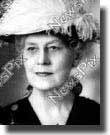
Florence Taylor
She became the first woman to fly a heavier than air machine in Australia, and also had the distinction of being the first Australian woman architect. The gift of flight was on its way.
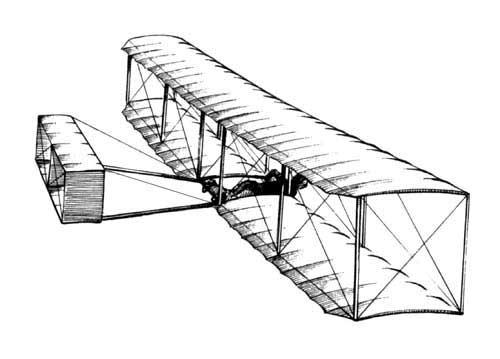
The Glider flown by FlorenceTaylor
Maude Rose Lores Bonny. MBE. 1897-1994.
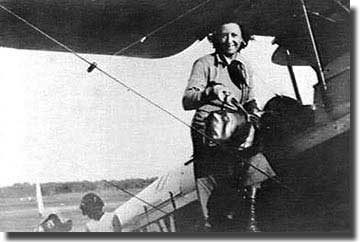
Maude Rose Lores Bonny. MBE. 1897-1994.
She called her Moth " My Little Ship." Born in South Africa as Maude Ruebens, the family migrated to Australia in 1906, and Lores as she called herself, married a Queensland businessman Harry Bonney in 1917.
Lores started flying in 1931.She became the first pilot to fly between Brisbane and Cape Town, and then in 1933, she left Darwin Australia on the 15th. of April, arriving at Croydon England, on the 21st. of June, gaining the title of the " The first woman to fly from Australia to England."
Quite a remarkable feat at that time, in a small single engined aeroplane. This adventurous woman lived to be 96.
Amy Johnson, CBE. 1903-1941.
Born at Kingston upon Hull England, on the 6th. of July 1903, she obtained a BA from Sheffield University, and started flying in 1928 at Staglane aerodrome, near Edgeware where the the DH Moth aircraft were built. She obtained her flying licence and a Ground Engineer's licence in 1929 ( the first British woman to do so ) Amy wanted to break Bert Hinkler's record for the flight from England/Australia and on the 5th. of May 1930 took off in her DH60G,Gypsy Moth, G-AAAH, named Jason ( after the Kippers produced in the family fish business at Hull.)
Her route, via Vienna, Bagdad, Karachi, Calcutta, and Singapore to Darwin, arriving after 19 and a half days flying, but did not gain the record, but was the first woman to fly this route solo.

Amy Johnson's Jason, in Flight Gallery, Science Museum, London.
On the 16th. of June 1930, this now famous Aviatrix was due to land at Noon, at the Moonee Valley Race Course, I was a boy of 8 attending the Coburg West State School. Everyone was wildly excited about this event, and with several of my class mates, we decided to wag school, grab our bikes and ride to Moonee Valley to greet this wonderful lady, not even thinking about the consequences of our action.
Amy was about 2 hours late, and finally, a small maroon and yellow plane appeared,( some one said it was a Gypsy Moth and not her Jason ) I certainly did not care, as we rushed forward to grab a glimpse of our heroine. A huge crowd were there, the newspaper next day put it at 15,000 people. When we got back to School it had finished for the day, and on arrival in class next morning we were sent off to see the Headmaster. Fortunately he viewed the Amy Johnson visit as historic, and forgave our actions. In 1931, Amy married an English aviator James. Mollison, but they divorced in 1938.
WW2.
Come WW2, she joined the Air Transport Auxiliary, and in January 1941, took off from Blackpool for a 90 minute flight to deliver an Air Speed Oxford. She disappeared in bad weather over the Thames Estuary, her body never found. A sad end for a woman who helped push back the frontiers of distance by the use of aeroplanes.
Jean Gardiner Batten. CBE. 1909-1982.
Born at Rotorua, New Zealand on the 15th. of September 1909, she became her country's most famous woman flier. Flying a De Havilland Gypsy Moth biplane G-AARB in 1933, she flew England/Australia 10,500 miles in 14 days, 22 hours and 30 minutes for the woman's record. Over 1933/37 she held a number of aviation records, including being the first person to hold both the England/Australia, and Australia/England solo records at the same time.
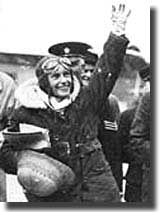
Jean Batten arrives at Croydon, England on 29th. April 1935.
After completing her solo flight Australia/England.
Peggy Kelman ( nee McKillop ) OBE. 1909-1999.
She gained her private flying licence at age 23, and in another three years had her commercial licence. Peggy in 1935, flew barnstorming flights in New South Wales for another Australian woman flier, Nancy Bird. In one day's work she achieved 29 take offs. This Aussie pilot claimed but one record: " The first and only pilot to fly from England to Australia whilst pregnant." Peggy with her great love of flight was still flying well into her eighties.
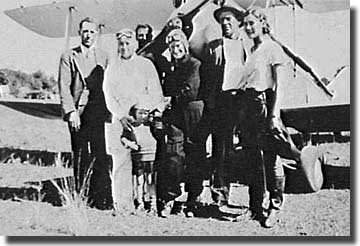
Peggy in white overalls with Nancy Bird
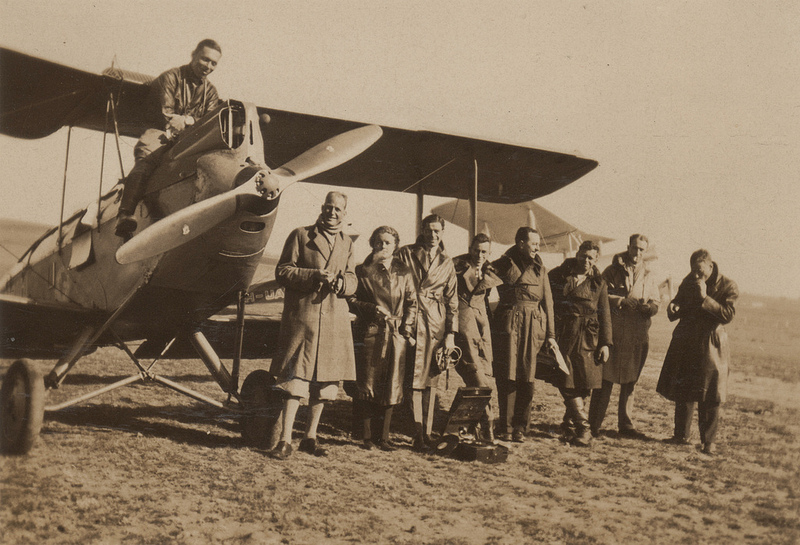
Peggy McKillop 3rd from Left
http://www.flickr.com/photos/smc2911/8500707755/ Thanks to Sean Carmody.
Millicent Bryant. 1878-1927.
Created aviation history by becoming the first Australian woman to be granted a Pilot's licence on the 28th. of March 1927, but unfortunately she was drowned that same year in a ferry accident on Sydney Harbour.
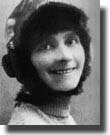
Millicent Bryant
Freda Thompson. 1906-1980.
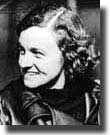
Freda Thompson
Freda qualified in 1933 as a flying instructor, being the first woman in both the British Empire and Australia to so do.
Became the first Australian woman to fly solo from England to Australia in 1934, naming her DeHavilland Moth Major G-ACUC Christopher Robin. Cancer claimed this dedicated flier in 1980.
Nancy Bird-Walton. AO, OBE. 1915-
Born in Sydney in 1915, the family name of Bird most apt, at age 4 she tried to make her first flight by launching herself from the back fence. She did make it at 13, and was hooked on flying. Charles Kingsford Smith ( later to be knighted for his flying prowess ) conducted Nancy's first flying lesson when she was but 17 in 1933. At age 20 she gained her licence to " Fly for hire and reward." becoming the first woman pilot in the Commonwealth to carry passengers.
Her book called: " My God Its a Woman." reflects the suprise often expressed by people she was about to transport in her aircraft.
In 1935, Nancy was hired to run an air ambulance service in outback New South Wales. When 24, she married an Englishman, Charles Walton, but retained her name to use Nancy Walton-Bird. In 1950 her long cherished ambition to set up an Australian Women Pilot's Association came to fruition, and she was its President for the next 40 years.
Nancy is still going strong, a wonderful example of skill and persistence in the art of flying in Australia, a role model indeed.
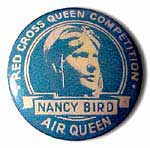
A 1930 Tin Badge for a Red Cross
Queen Competrion featuring Nancy Bird.
Jessie "Chubbie" Miller. 1910-1972.
Jessie, known as "Chubbie" an Australian journalist left England in June 1927, after 159 days arrived in Australia to claim she was the first woman to complete an England to Australia flight. She flew as a passenger with Bill Lancaster, a former RAF Officer in his two seater Avro Avian. Lancaster in 1933, trying for another record, went missing, to vanish over the desert in Africa near Reggan Algeria. The wreck of his aircraft was not discovered until the 12th. of February 1962, when found by the French.
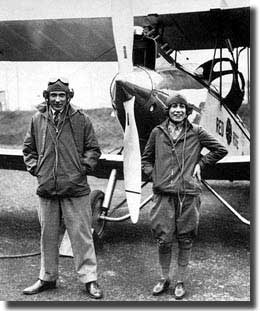
Bill Lancaster and Chubbie Miller. After their arrival in Darwin 1928.
Conclusion.
Australians are inveterate travellers within the shores of their own country, and to all the corners of the globe. We have embraced air travel with a passion, and owe a debt of gratitude to all these wonderful women who, with their skill, courage, and persistence, "Lit the lamp to show us the way."
WE SALUTE YOU !
Update 3 July 2010
Flights Oz Flight '99 Fran West
A marathon flight around the coast of Australia (mainland and Tasmania) to commemorate the 21st anniversary of Pelican's Progress, recording the flight with photographs, and to promote Soroptimist International (a women's service organisation).
Fran West flew about 27,000 kilometres (equivalent to over half way around the world).
Her flight path was anti-clockwise around the coast, mostly flying over the ocean within gliding distance of land at heights of 1,000 to 1,500 feet (300 to 500 metres).
She landed on 90 different airstrips: 75 for the mainland and 15 for Tasmania, including landings on Phillip Island (Victoria), Horn, Sweers and Mornington Islands (Queensland), and Flinders, Cape Barren and Bruny Islands (Tasmania).
The 145 hours flying time included detours inland to Lawn Hill National Park (Queensland), Newman, Karijini National Park, Windjana Gorge, Geikie Gorge, the Bungles, Argyle Diamond Mine, Halls Creek, Wolfe Creek Crater and Kalbarri National Park (Western Australia) and Cradle Mountain (Tasmania).
As with most adventures, there were testing times that brought an adrenalin rush. Like flying through smoke haze from the burn off season in the Northern Territory, being forced lower towards the ocean to dodge heavy rain showers, and turning back because of strong turbulence buffeting the plane about the sky.
It was 7 years dreaming, 2 years planning, 3 months adventuring. In other words: dream it, plan it, do it!
UPDATE
Aviation pioneer Nancy Bird-Walton dies on January 13, 2009.
National Treasure: Nancy Bird-Walton
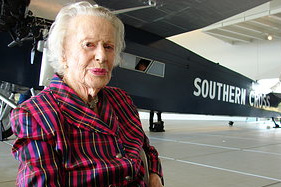
One of Australia's most famous aviators, Nancy Bird-Walton, has died aged 93.
Born in the New South Wales north coast town of Kew in 1915, Ms Bird-Walton became the first female pilot to get her commercial pilot's licence at the age of 19.
She wanted to fly from the age of four and she was taught to take the controls when she was just 17 by Charles Kingsford Smith.
She went on to pioneer an air ambulance service for outback New South Wales and was commandant of the Women's Air Training Corps during World War II.
Ms Bird-Walton also founded the Australian Women Pilots' Association and went on to be president for about 40 years.
In 1997, Ms Bird-Walton was named a Living National Treasure by the National Trust.
Last year Qantas named its first A380 jet in her honour.
She is survived by her daughter, her son, four grandchildren and two great-grandchildren.
Speaking to the ABC's Peter Thomson in 2006, Ms Bird-Walton said she was thrilled by the exhilaration of flying.
"The freedom of the air. The freedom of flight," she said on the Talking Heads program.
"And you completely remove yourself from the world. And you can voluntarily remove yourself from all those ... everything that's near and dear to you. And you voluntarily return."
She said if her father had had his way, she would have followed in his footsteps and run the general store in the town of Mount George, New South Wales.
"He was a very hardworking man. He believed in working 16 hours a day. And he thought everybody else should," she said.
"When I came down to visit mother, I went out to Mascot in 1930 and had a trial instruction flight with Captain Leggett.
"And that convinced me that that was what I wanted to do. So I bought myself a flying helmet and then I went back to the country to save up and grow up."












